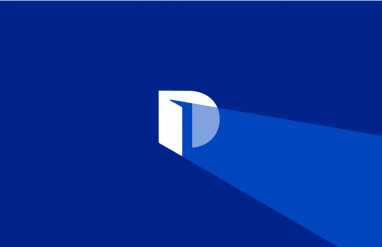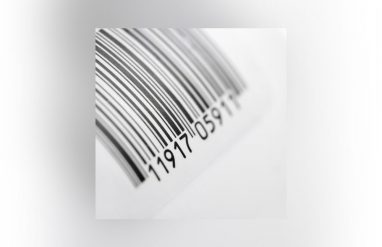Legally, to trademark something means to make it so that only one company can make money off of something with that name. You might not realize it, but many of the seemingly generic words we use all of the time are or were registered trademarks. This is often a problem for companies who want to avoid their lucrative trademarks being killed by “genericide,” meaning they can no longer claim legal exclusivity to a particular name.
In general, there are two categories of so-called “genericized trademarks.” Sometimes, a trademark is legally abandoned. This means, for example, that any company can make a bouncy toy called a trampoline. However, a lot of common words are still legally trademarked, which means only one company can use that name. For example, to avoid getting Nickelodeon in trouble with licensing deals, Spongebob and friends have never heard of a Frisbee and must instead play a rousing game of “small plastic disc that you throw.” (Of course, Spongebob wryly notes, “If only small plastic disc that you throw had a shorter, catchier name.”)
The following list contains 40 common words that have actually been trademarked at some point. The first six have been legally abandoned, meaning they are now generic words. The rest, however, are still on the books, and so you will need to be careful if you ever think about using them to make money.
If you want to learn more about trademarks and other corporate symbols, check out our handy guide here.
aspirin
Last owner: Bayer AG
The word aspirin is a combination of acetyl, spirea, and the suffix -in that is commonly used in the names of many drugs.
heroin
Last owner: Bayer AG
The drug heroin is said to have been named for the German word heroisch, which translates to “heroic.” It is often thought that the name was inspired by the euphoric feelings a person has when taking this now illegal drug.
escalator
Last owner: Otis Elevator Company
The escalator was named by patent owner Charles Seeberger, who is believed to have combined the English word elevator with the Latin word scala, meaning “stairs.”
granola
Last owners: Our Home Granula Company (granula) and Kellogg’s (granola)
Originally called granula, granola was invented by James Caleb Jackson, who is also often credited as the inventor of dry cereal. It is thought that Jackson took the name either from the English word granular (“grainy”) or the Latin grānum, meaning “grain.”
Saran wrap
Last Owner: S.C. Johnson & Son, Inc.
Saran wrap was originally created by the Dow Chemical Company in 1933. The saran in Saran wrap comes from a combination of the first names of Dow employee John Reilly’s daughter and wife, Sarah and Ann.
trampoline
Last Owner: Griswold-Nissen Trampoline & Tumbling Company
According to inventor George Nissen, the trampoline’s name was inspired by the Spanish word trampolín, which means “diving board.”
Learn about the origins of the trampoline and other classic toys and games here.
AstroTurf
Owner: Sport Group
According to Sport Group, Astroturf is named for the Houston Astrodome, where it was first used as a grass replica. The Astrodome’s name comes from the baseball team that plays there, the Houston Astros.
Band-Aid
Owner: Johnson & Johnson
Band-Aid adhesive bandages were invented by Earle Dickinson in 1920 for his wife, Josephine. Although we don’t know for certain, the name is most likely a combination of the words bandage and aid.
Bubble Wrap
Owner: Sealed Air Corporation
Bubble Wrap was invented in 1957 by Alfred Fielding and Marc Chavannes, who originally intended to use it as wallpaper. The name is most likely a combination of the words bubble and wrap.
Frisbee
Owner: Wham-O
The name Frisbee was inspired by an Old Connecticut Bakery, the Frisbie Pie Company. Allegedly, college students had popularly referred to Wham-O’s Pluto Platter toys as “Frisbies,” which would motivate the toymaker to change the name.
Hacky Sack
Owner: Wham-O
The game of Hacky Sack, called footbag by anyone who isn’t Wham-O, was invented by John Stalberger and Mike Mitchell in 1972. Allegedly, the two friends would say “Let’s hack the sack” before playing the game, which would be the inspiration for their trademark.
Hula-Hoop
Owner: Wham-O
The Hula-Hoop was patented by Wham-O in 1963. As you could probably guess, the hoop-shaped toy was named after the Hawaiian hula dance because of the hip movements needed to keep the toy from falling to the ground.
Jacuzzi
Owner: Jacuzzi Inc.
The Jacuzzi is named after Italian inventor Candido Jacuzzi, who invented the whirlpool bath in 1949.
Jeep
Owner: Chrysler Group LLC
Fascinatingly, even the current owner of the Jeep trademark, Chrysler, is unsure of where the name originally came from. The most popular theory is that the vehicle was named after Eugene the Jeep, a character from the Popeye series of comic strips.
Jet Ski
Owner: Kawasaki Heavy Industries Ltd.
According to Kawasaki, the first Jet Ski was developed in 1972 based on the designs of American inventor Clayton Jacobson II. It seems likely that the name Jet Ski uses the words jet and ski to reference how the vehicle quickly skates across the surface of water.
JumboTron
Owner: Sony Corporation
The Sony JumboTron debuted in 1985, but similar large screens had been developed by Japanese companies as early as 1980. The name is likely a combination of the adjective jumbo, meaning very large, and the combining form -tron, which is sometimes used in the names of electronics.
Kleenex
Owner: Kimberly-Clark Corporation
Kleenex brand tissues debuted in 1924. According to the Kleenex website, the name Kleenex is a combination of an alternate spelling of the word clean (“Kleen”) and the ending “ex” from Kotex, a feminine hygiene brand name still owned by the Kimberly-Clark Corporation.
Mace
Owner: Mace Security International, Inc.
The brand of pepper spray known as Mace or Chemical Mace was invented in 1965. According to both the Mace company and newspaper reports from the time, the name Mace was inspired by the fact that getting sprayed in the face with Mace was said to be as unpleasant as being hit in the face with a medieval mace, a spiked weapon.
Magic Marker
Owner: Bic Corporation
The name Magic Marker is said to have been coined by Sidney Rosenthal, who is also credited with inventing the felt-tip pen in 1952. According to Crayola, Magic Marker was inspired by the fact that the “magical” device could make marks on any surface.
Muzak
Owner: Muzak LLC
The creation of Muzak is credited to—or perhaps blamed on—Major General George O. Squier, who developed a way to transmit music through electric wires in the 1920s. According to most sources, Squier named his company Muzak by combining the first syllable of the word music with the end syllable of Kodak, a major American photography company.
Onesie
Owner: Gerber Childrenswear LLC
Although Gerber legally only owns the trademark of the plural Onesies, they have successfully (and aggressively) enforced their trademark over the singular onesie as well. The name is a combination of the word one, referring to a one-piece garment, and the cutesy-sounding suffix -sie.
Ping-pong
Owner: Indian Industries, Inc.
Surprisingly, the trademarked name ping-pong may actually be older than the generic table tennis, which is the official name of the game. The name ping-pong has been used since at least the 1800s, and the name was inspired by the sound that the ball makes when hit with paddles.
Plexiglas
Owner: Trinseo
The origin of the name Plexiglas, often incorrectly written as plexiglass, is unknown. According to the Plexiglas website, Plexiglas was named after one of inventor Otto Röhm’s earlier products known as “Plexigum,” but beyond that the trail goes cold.
Popsicle
Owner: Conopco, Inc.
The idea of “frozen ice juice on a stick” is credited to Frank Epperson. Epperson originally named the treat after himself and called it an “Epsicle” with the “-sicle” coming from icicle. Epperson’s children were not fans of the name and instead called them “Pop’s sicles.” In the end, Epperson sided with his children and patented his invention as the Popsicle.
Discover the language of our other favorite frozen treat: ice cream!
Post-it Note
Owner: Minnesota Mining and Manufacturing Company (3M)
3M credits the creation of the Post-it Note to scientists Spencer Silver and Art Fry. The name refers to the fact that the adhesive paper notes can be posted (stuck) wherever you want. An added bit of legal fun: 3M also legally owns the “Canary Yellow” color that many Post-it Notes typically have.
Q-tip
Owner: Conopco, Inc.
The cotton swabs known as Q-tips originally had the very unmarketable name of “Baby Gays.” The name was quickly switched to Q-tips in 1926. According to the Q-tips website, the Q stands for quality, and the tip refers to the cotton tip at the end of the swab.
Realtor
Owner: National Association of Realtors
Legally, only people who belong to the National Association of Realtors can use the trademarked name Realtor. The term Realtor is credited to Charles N. Chadbourn, and it is a combination of the word realty, meaning real estate, and the suffix -or, indicating a person related to something (in this case, real estate).
Rollerblade
Owner: Tecnica Group S.P.A.
This trademarked brand of roller skates was created by inventor Scott Olson in the 1980s. The name Rollerblade references the fact that Olson’s roller skates were based on ice skates with wheels instead of blades.
Sheetrock
Owner: United States Gypsum Company
The particular brand of drywall or gypsum boards known as Sheetrock seems to have a straightforward name: Sheetrock makes boards (“sheets”) of gypsum, a mineral (a “rock”).
Skee-Ball
Owner: Bay Tek Entertainment, Inc.
The game of Skee-Ball was invented by Joseph Fourestier Simpson in the early 1900s. The name is a combination of the word ball and skee (an uncommon variant of the word ski) in reference to the ski jump-like ramp that the balls roll off of.
Styrofoam
Owner: DDP Specialty Electronic Materials Us, Inc.
Styrofoam’s name is a reference to the chemistry used to make it. Styrofoam is a plastic foam made from polystyrene.
Super Glue
Owner: The Original Super Glue Corporation/Pacer Technology
Super Glue was named by its inventor Dr. Harry Coover, who discovered it in 1942. The marketable name combines the word glue with the word super, referencing how incredibly sticky it is.
Taser
Owner: Axon Enterprise Inc.
The Taser was invented in the 1970s by Jack Cover. The name Taser is an acronym of “Tom A. Swift Electric Rifle,” a reference to the Tom Swift series of books about an inventor that Cover enjoyed as a child.
Tarmac
Owner: Tarmac
The name Tarmac is a shortening of tarmacadam, an asphalt-like paving material made of tar and crushed stones.
Teflon
Owner: The Chemours Company
The name Teflon is a short, marketable word that refers to what Teflon is made of: polytetrafluoroethylene.
Velcro
Owner: Velcro IP Holdings LLC
Velcro was invented and named by Swiss engineer George de Mestrel. De Mestrel got the name Velcro from a combination of the French words velour and crochet, referencing the fact that his new material resembled “hooked velvet.”
Xerox
Owner: Xerox Corporation
The name Xerox comes from the word xerography, a specific type of printing technology. Xerography is formed from xero-, meaning “dry,” and –graphy, which denotes a form of artistry.
Zamboni
Owner: Frank J. Zamboni & Company, Inc.
The ice surfacing machine known as a Zamboni is named after its Italian inventor, Frank Zamboni.
The last two names on our list are fairly modern and are both closely associated with large companies that aggressively protect their trademarks. However, they are both commonly used as generic verbs, which may make it less likely that future generations know who the trademark owners are.
Owner: Alphabet Inc. (Google’s new parent company)
The name Google is based on a misspelling of the mathematical term googol, a number equal to one with 100 zeros. The story goes that Google developer Larry Page suggested the name “Googol” for a new search engine to fellow Stanford graduate Sean Anderson. Anderson misspelled the word as “google” when checking if the domain name was taken, and Page preferred this original name instead.
Photoshop
Owner: Adobe Inc
The Photoshop software was created by Thomas and John Knoll in 1987. It is unknown exactly why the program that was originally named “Display,” and then “ImagePro,” was renamed to “PhotoShop” before it was sold to Adobe, although the name does seem to refer to the fact that the program functions as a kind of photography workshop.
Take the quiz
Now that you’ve reviewed this list of trademarks and realized how many you probably use in your daily conversations, take a moment to look back at them any time with our handy word list. Or, if you’re looking to test yourself on the facts about these genericized trademarks, head to our short quiz.














